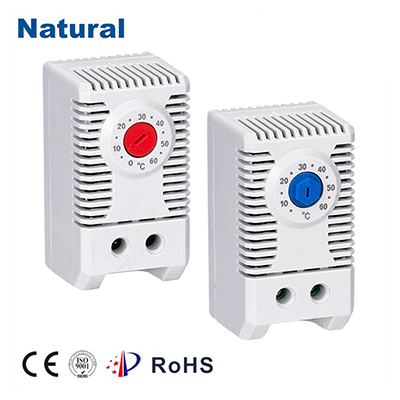In the world of heating, cooling, and climate control, technology has played a pivotal role in enhancing our comfort and energy efficiency. One such technological marvel is the contact thermostat. Over the years, contact thermostats have undergone significant advancements, revolutionizing the way we manage temperature in our homes and workplaces. In this article, we will explore the history, functionality, and the future prospects of contact thermostats.

I. A Brief History The concept of regulating temperature using thermostats dates back to the 17th century when Dutch inventor Cornelis Drebbel created a mercury thermostat to control the temperature in an oven. However, it wasn’t until the 19th century that contact thermostats began to take shape. Andrew Ure, a Scottish chemist and inventor, is credited with developing one of the earliest practical contact thermostats in the early 1830s. His device used a bimetallic strip to control a damper in a furnace, maintaining a constant temperature. II. How Contact Thermostats Work Contact thermostats operate on a simple yet effective principle: they maintain temperature by opening or closing an electrical circuit based on temperature fluctuations. Here’s how they work: Sensing Temperature:Contact thermostats are equipped with a temperature-sensitive element, often a bimetallic strip or a thermistor. This element expands or contracts with changes in temperature. Switching Action:As the temperature rises or falls, the temperature-sensitive element in the thermostat responds accordingly. When a predefined temperature setpoint is reached, the element triggers a switch. Circuit Control:The switch, often a relay or a set of contacts, opens or closes an electrical circuit connected to the heating or cooling system. When the circuit is closed, the system turns on to maintain or adjust the temperature. Continuous Feedback:Contact thermostats continually monitor the temperature and cycle the connected equipment on and off as needed to maintain the desired temperature range. III. Advancements in Contact Thermostats In recent years, contact thermostat technology has seen remarkable advancements, making them more user-friendly and energy-efficient. Some notable improvements include: Digital Interfaces:Modern contact thermostats often feature digital displays and user-friendly interfaces, allowing users to set precise temperature preferences with ease. Programmable Options:Programmable contact thermostats enable users to create customized heating and cooling schedules, optimizing energy usage and reducing utility bills. Smart Integration:The integration of contact thermostats with smart home ecosystems has been a game-changer. Users can now control their thermostats remotely via smartphones, voice commands, or even through artificial intelligence. Energy Efficiency:Advanced algorithms and sensors in contact thermostats can adapt heating and cooling cycles based on occupancy and outdoor weather conditions, further reducing energy consumption. IV. The Future of Contact Thermostats Looking ahead, contact thermostats are poised to continue evolving. Here are some anticipated developments: Artificial Intelligence:Contact thermostats will become even smarter, learning user preferences and optimizing temperature control autonomously. Energy Harvesting:Research into energy-harvesting technologies may enable contact thermostats to operate without batteries or external power sources, reducing environmental impact. Integration with Renewable Energy:Contact thermostats may seamlessly integrate with renewable energy sources, enabling users to maximize the use of solar or wind-generated power for heating and cooling. Health and Air Quality Monitoring:Future thermostats could incorporate sensors to monitor indoor air quality and even offer health-related insights, ensuring a comfortable and healthy living environment. In conclusion, contact thermostats have come a long way from their humble beginnings, and they continue to shape our modern approach to temperature control. With ongoing technological advancements, these devices are becoming smarter, more energy-efficient, and better aligned with our environmental goals. As we move into the future, contact thermostats will undoubtedly play a central role in creating comfortable and sustainable living and working spaces.